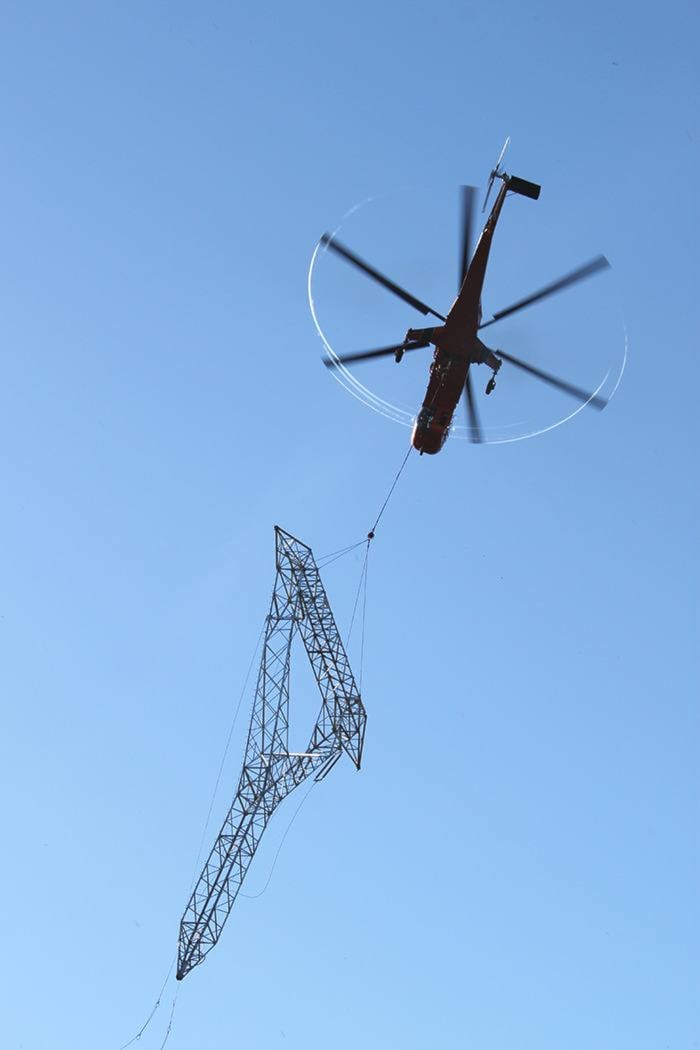TEMPERATURES PUSHED into the mid 30s as the mega helicopter brought in to heft hydro towers along the 344 km Northwest Transmission Line moved along the first of five sections just west of Terrace.
To a person standing next to the Erickson Aircrane and feeling the wafts of engine heat as it refuelled, it felt like 45 degrees.
The 30-year-old beast of a helicopter that is as long as a semi truck and can lift 20,000 lbs costs $13,500 per hour plus gas (2,000 litres per hour) to run.
So the heat is also on to be efficient.
According to BC Hydro, it took an estimated 45 hours of airtime to lift in approximately 180 towers in section one near Terrace and part of section five near the Bob Quinn substation.
The twin-piloted craft would come down and hook onto one of the 12 towers, each weighing 17,000 lbs, and then haul it to its foundation.
Once hovering over the foundation, a crew of nine Valard workers wait to guide the pin into the socket.
First, about four of them actually grab the base and sway it back and forth while the foreman issues radio orders to the pilot.
Once the pin is set, then four guy wires are lashed into place extending out to anchors on the corners of the site.
Setting the pin, which is only a few inches thick, into the foundation, is the most time-consuming part.
The foreman’s directions came in rapid sequence.
“Inches, inches! Three low, one low, three low. Inches! Inches! Six low! You’re on the pin!”
During the hot day, the clouds of dirt spun up into 100-foot-high columns.
Twice the crane returned and set down its load because of difficulties setting the pin.
Lineman consultant and guide Dave Mathers said this work is inherently unpredictable.
“Five minutes was the shortest and 23 the longest, from when they hook the tower until they cut it,” he said.
After getting off to a faster than expected start, the job was delayed early on because of workplace injury, but several productive days brought the pace back up, and the job wrapped up on time last Wednesday, nine days after it started.
